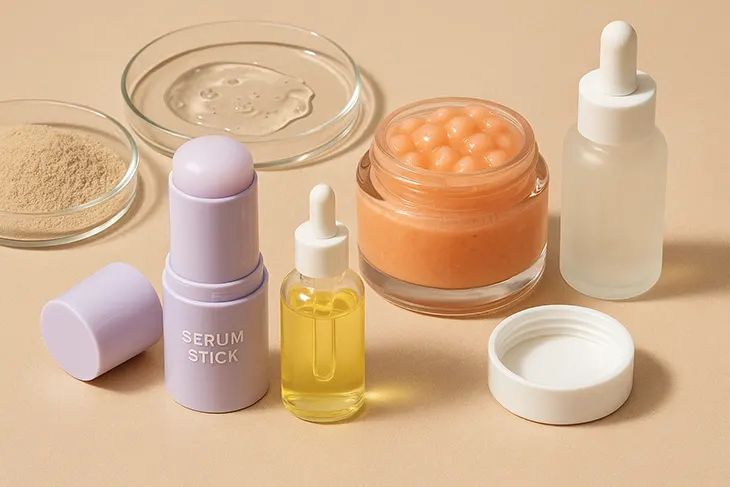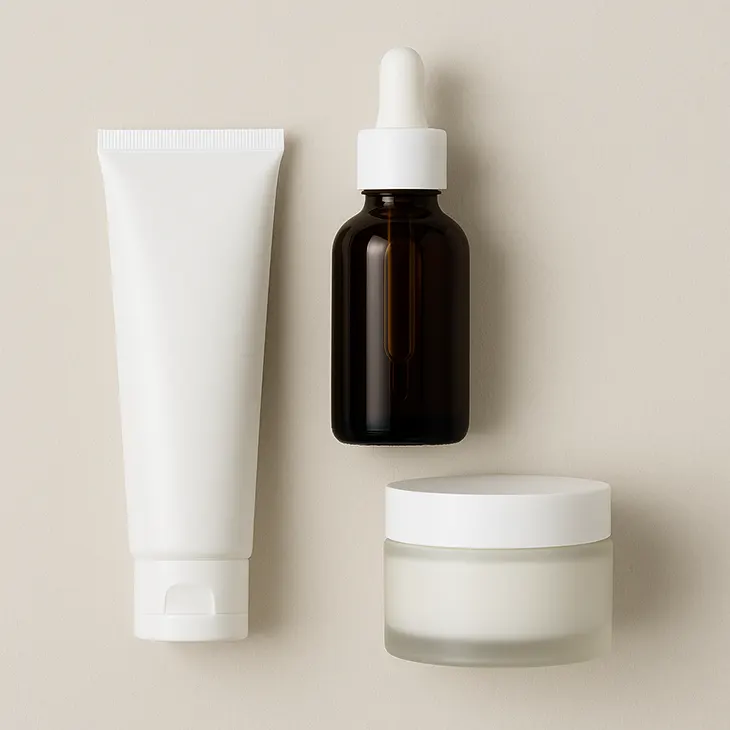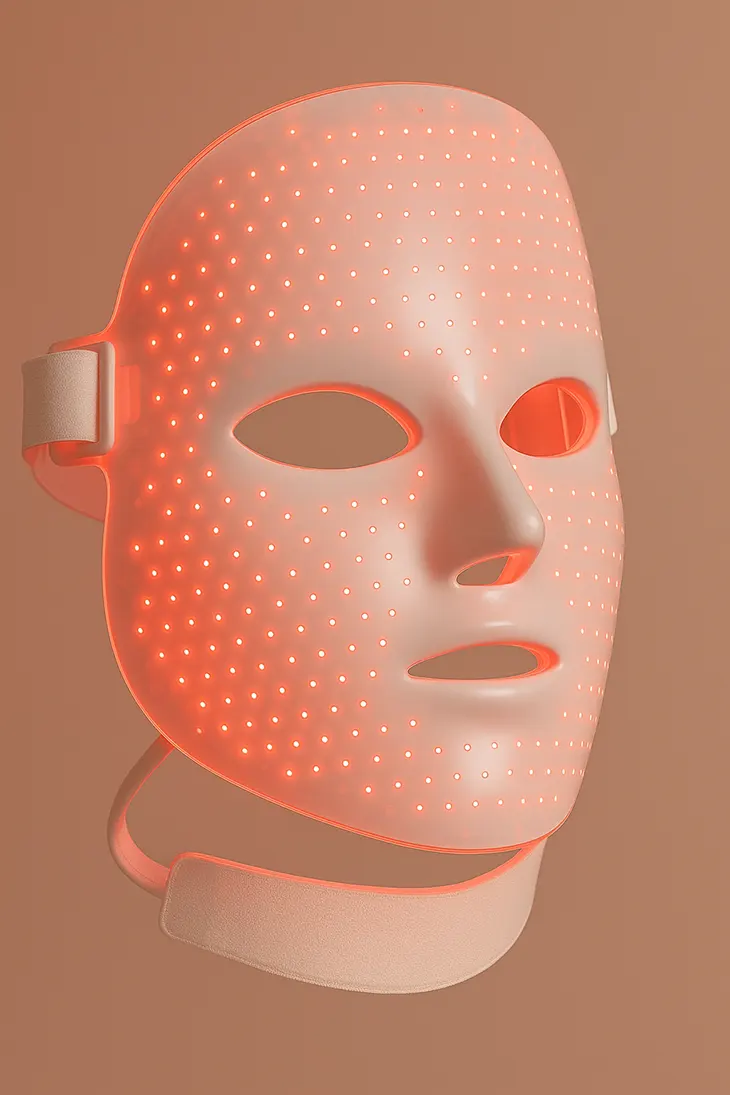
The skincare industry in 2025 is evolving with a dual focus: advanced innovation meets stripped-down simplicity. Consumers are more informed, less patient with marketing fluff, and increasingly drawn to products that are either high-performance or purposefully minimal. Whether it’s a swipe-on serum stick or a biotech-powered face cream, the demands are clear – products must work, multitask, and fit seamlessly into modern routines.
SKINCARE
At the core of this shift lies a more educated skincare audience. TikTok and dermfluencers have made pH levels, microbiomes, and ingredient lists part of everyday beauty conversations. But rather than overwhelm, the new mood is refreshingly pragmatic. People want fewer steps, more impact, and a deeper connection between what’s in their routine and what’s on their mind, barrier health, environmental stress, and long-term skin resilience.
The Rise of New Ingredients
2025’s most in-demand actives reflect the intersection of performance and gentle efficacy. Peptides, already a staple, are being reformulated into complex blends that support collagen, hydration, and elasticity without irritating sensitive skin. Brands like Glow Recipe and Dermalogica are leaning into multi-peptide formulas designed for “bouncy,” resilient skin.
Equally buzzy are bio-fermented ingredients. Fermentation boosts the potency and absorption of botanical extracts like rice, kombucha, and algae. These fermented actives don’t just hydrate, they soothe, strengthen, and often come with microbiome benefits. Fermented skincare has evolved far beyond K-beauty’s original yeast filtrates; now, even Western brands are infusing creams and serums with lactobacillus ferment or fermented oat to calm reactive skin.
Then there’s the biotech push. Exosomes, cellular messengers derived in labs, are beginning to appear in high-end products, promising regeneration and repair at a cellular level. PDRN (polydeoxyribonucleotide), derived from salmon DNA, is another biotech darling, especially in Korean skincare. Often called the “salmon sperm facial” ingredient, PDRN is known for improving skin texture and elasticity, and is now making its way into at-home ampoules and masks.
Format Innovations:
Skin Sticks and Bodycare Reboots
Not all skincare trends live inside a serum dropper. In 2025, product format is just as important as formulation. Serum sticks are on the rise, offering concentrated actives in solid balm forms that swipe on cleanly and travel easily. Their compact, waterless design also reduces the need for preservatives and makes them ideal for those with sensitive skin.
Equally important is the expansion of skincare into areas once overlooked. Bodycare now mirrors facial care, with lotions and creams featuring retinol, peptides, AHAs, and vitamin C. Consumers are treating chest, neck, arms, and even knees with the same concern once reserved for fine lines and acne. Brands like SIDIA and Gente are contributing to the rebranding of bodycare as a luxury ritual, not a drugstore afterthought.
The neck, too, is getting its moment. With the global neck-care market expected to reach $43 billion by 2032, neck-specific creams, tools, and even sheet masks are becoming more common. The logic is simple: skincare should go everywhere skin goes.

Barrier-First Thinking and Microbiome Mania
If one theme could define 2025 skincare, it’s barrier health. Every brand now seems to have a “barrier-repair” cream, serum, or mask, and for good reason. Over-exfoliation, harsh ingredients, and environmental stress have led to a generation of sensitive skin. Consumers are demanding solutions that protect the stratum corneum, the skin’s outermost layer, rather than compromise it for short-term glow.
This ties directly into the popularity of microbiome-friendly skincare. More products are formulated to nurture skin’s natural bacteria rather than sterilize it. Prebiotics, probiotics, and postbiotics are common additions to mists, cleansers, and moisturizers. While scientific data is still developing, the trend reflects a larger shift toward supporting the skin’s ecosystem, not disrupting it.
The Return of Minimalism
Long gone are the days of 10-step routines, skinimalism is in full swing. Consumers want multi-benefit formulas that reduce steps without sacrificing results. Think: a single serum that combines vitamin C, niacinamide, and peptides. The Ordinary, once known for single-ingredient products, is now introducing more complex blends to meet this demand.
This less-is-more approach isn’t just about efficiency; it’s about skin health. Dermatologists report that simplifying routines leads to fewer flare-ups, better hydration, and more consistent results. People aren’t giving up actives, they’re just layering smarter. A solid SPF, antioxidant-rich serum, and nourishing moisturizer now form the foundation of most modern routines.
Sustainability and Ingredient Ethics
Ethical beauty is no longer a niche, it’s the norm. Consumers expect vegan, cruelty-free, and sustainably sourced products. Packaging matters too: refillable bottles, biodegradable materials, and waterless formats are becoming standard. Brands using upcycled ingredients, like coffee grounds or fruit peels, are seen as innovators rather than eccentrics.
Transparency is key. Ingredient lists are scrutinized, and shoppers want to know not just what is in a product, but why. Clean beauty labels have become more nuanced, avoiding fear-mongering while focusing on efficacy without unnecessary additives like parabens or synthetic dyes.

The Tech Takeover:
From AI to LED Masks
2025 is also the year of tech-enhanced skincare. AI-powered skin analysis tools, often built into apps, help users assess their concerns and create tailored routines. Some brands even offer personalized serums based on your quiz results or skin scan. While DNA-based formulations are still niche, personalized routines guided by tech are quickly becoming mainstream.
Meanwhile, at-home devices are booming. LED light therapy masks, microcurrent facial toners, and ultrasonic skin spatulas are everywhere, offering spa-like results in your bathroom. Big tech names like Shark and LG are entering the market, signaling just how big this category is set to become. For many, these tools are an investment in both skin and time, amplifying product results while offering a moment of ritualized self-care.
Where Skincare Goes Next
What unites all these trends is a clear pivot away from empty promises and toward products that respect skin, its biology, its function, its rhythms. Whether via fermented essences or exosome serums, skincare trends in 2025 aren’t about chasing glow at any cost. It’s about strengthening what’s already there, enhancing it with precision, and supporting skin health in the long term.
Consumers are more empowered than ever, and they’re choosing smarter, cleaner, and more versatile skincare. Brands that meet them with transparency, innovation, and respect for the skin barrier are the ones that will define the future. From gummy-textured peptide creams to AI-curated regimens, this is what skincare looks like now. And it’s only getting sharper.



